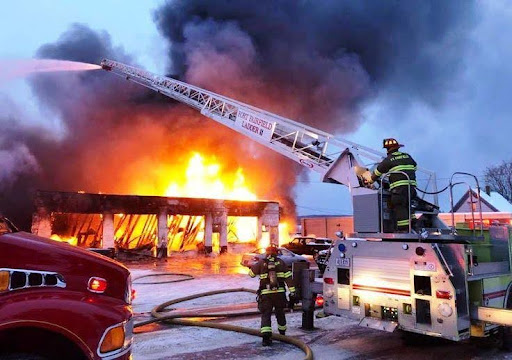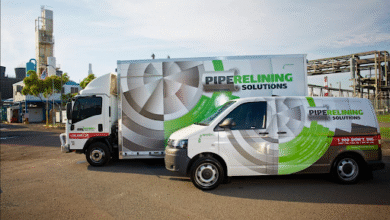Passive Fire Protection is Essential for Every Australian Building

When it comes to fire safety, most people think of alarms, sprinklers, and extinguishers. While these are undeniably important, there’s another crucial element that plays a major role in protecting buildings and lives—passive fire protection. In Australia, where building regulations are strict and fire risks are real, passive fire systems are essential for compliance and safety.
Whether you manage a commercial facility, oversee construction projects, or own residential property, understanding the value of passive fire protection can save lives, limit damage, and ensure your building meets all the necessary standards.
What is Passive Fire Protection?
Passive fire protection (PFP) refers to the built-in features of a structure that help contain or slow the spread of fire and smoke. Unlike active systems that require activation (like sprinklers or alarms), passive fire systems are always working—silently providing a layer of safety through the materials and design of your building.
PFP is achieved through specially designed fire-rated walls, floors, doors, ducts, sealing systems, and other structural components that form part of the building’s fire strategy.
Key Components of Passive Fire Protection
At its core, passive fire protection involves several systems working together to create fire-resistant compartments and protect critical escape routes.
1. Fire-Resistant Barriers and Walls
Fire-rated walls and partitions are used to divide a building into sections or “compartments”. These are designed to contain a fire within one area, preventing it from spreading too quickly and allowing safe evacuation.
2. Fire Doors
Certified fire doors are installed in key positions to limit fire and smoke movement between rooms. They automatically close during a fire and remain shut to help maintain compartmental integrity.
3. Fire Stopping and Sealing
When pipes, cables, or ductwork penetrate fire-rated walls or floors, they create potential paths for fire to spread. Fire stopping systems, such as fire-resistant sealants and collars, are installed to block these gaps and maintain the fire-resistance rating of the structure.
4. Fire Dampers in Ducts
Air conditioning and ventilation systems can inadvertently spread smoke and flames. Fire dampers close automatically when heat is detected, sealing off air ducts to prevent the spread of fire and smoke through HVAC systems.
5. Intumescent Coatings
These are special paints or sprays applied to structural elements like steel beams. In high heat, they expand and form an insulating layer, helping to preserve the building’s structural integrity for longer during a fire.
Why Passive Fire Protection Matters in Australia
Australia is known for its hot climate and dry conditions, which can create a higher risk for fires—especially in bushfire-prone regions. But the importance of passive fire protection goes beyond bushfires.
✓ Compliance with Australian Building Codes
The National Construction Code (NCC) requires strict fire safety measures in all buildings. Passive fire protection is a key component of compliance, and failure to meet these standards can result in legal consequences, insurance issues, or even building shutdowns.
✓ Protecting Lives
PFP plays a vital role in giving occupants enough time to evacuate safely. By slowing the spread of fire and smoke, it helps reduce panic and ensures that emergency exits remain accessible for as long as possible.
✓ Minimising Property Damage
Passive fire systems can significantly reduce the extent of fire damage by isolating the fire. This can save thousands of dollars in repair costs and reduce downtime for businesses.
✓ Essential for High-Rise and Commercial Buildings
In multi-storey buildings, such as apartments and office blocks, fire compartmentation is especially important. With shared walls, common areas, and complex layouts, a fire can spread rapidly without effective PFP.
Professional Installation is Key
Passive fire systems only work effectively if they’re installed correctly by trained professionals. At Vanquish Services, we specialise in tailored passive fire protection solutions that meet Australian standards and support long-term building safety.
Our expert team assesses your building, identifies areas of risk, and installs certified fire stopping systems, barriers, and compartmentation features that keep your structure compliant and protected. From new builds to retrofits, we deliver quality workmanship with a safety-first approach.
Maintenance and Inspection Matters
Once installed, passive fire systems must be regularly inspected and maintained to ensure continued performance. Over time, renovations, wear and tear, or damage can compromise fire protection. That’s why Vanquish Services offers routine inspections, reporting, and repairs, so your systems remain effective and compliant.
Why Choose Vanquish Services?
- Australian Standards Certified: All our passive fire systems meet or exceed NCC and AS requirements.
- Experienced Team: We bring years of experience in fire protection for residential, commercial, and industrial buildings.
- Customised Solutions: No two buildings are the same—we tailor solutions to your layout, risk level, and compliance needs.
- End-to-End Service: From consultation and design to installation and ongoing maintenance, we handle it all.
Final Thoughts
Fire safety isn’t just about reacting—it’s about preparing. Passive fire protection is one of the most reliable, cost-effective ways to ensure your building is safe, legal, and ready to face the unexpected. At Vanquish Services, we’re proud to help Australian property owners create safer spaces with expertly designed and installed fire protection systems.




